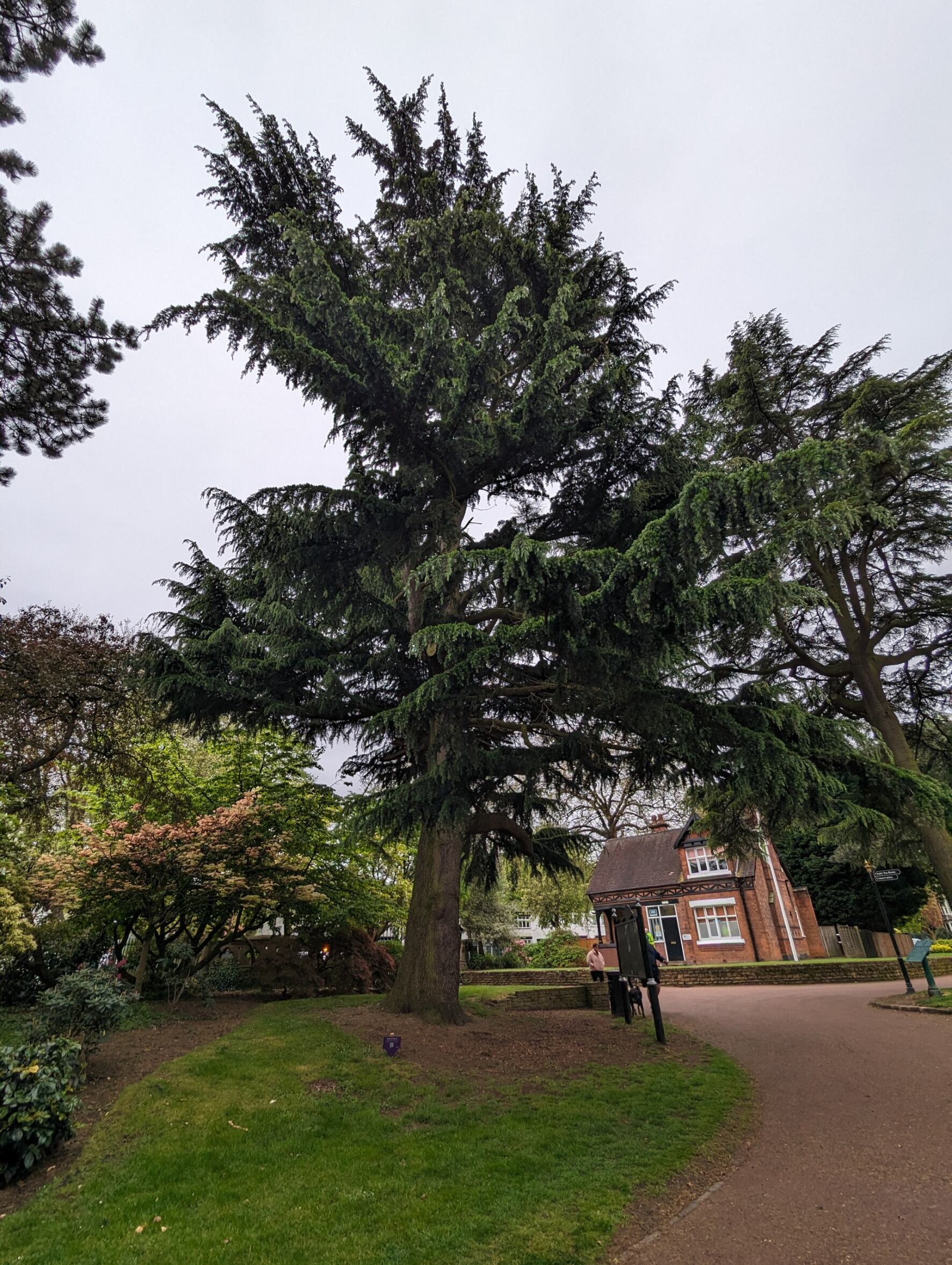
Botanical Name: Cedrus libani
Common Name: Cedar of Lebanon
This native of Lebanon, Syria and Turkey was firs] introduced to the British Isles in the 17th Century. It can be identified from the Atlas Cedar and the Deodar Cedar by the general rule: Atlas-Ascending, Lebanon Level, Deodar-Down when applied to the young shoot tips.
Commonly known as the Cedar of Lebanon, has a storied history and cultural significance. Here's an overview:
The Cedar of Lebanon's historical and cultural significance, combined with its practical uses, makes it a tree deeply rooted in the heritage of the Eastern Mediterranean region.
Map
Please see the map below for tree locations and routes around the park. Click to enlarge the map.
20643
